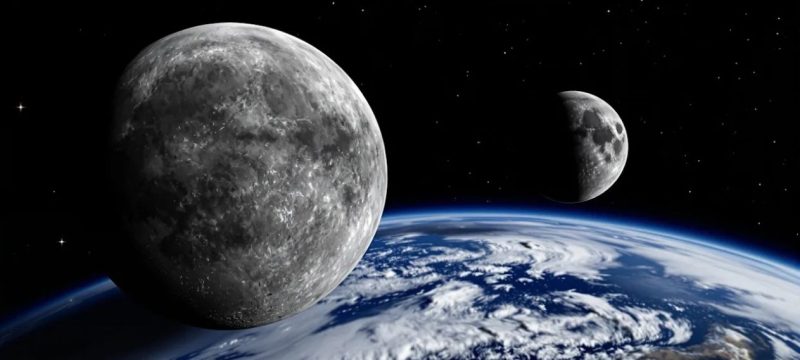Earth has gained a new space companion — a small asteroid named 2025 PN7. NASA confirmed this week that the object is a “quasi-moon,” a rare type of celestial companion. Unlike the Moon, it is not gravitationally bound to Earth but follows a similar orbit around the Sun.
The asteroid measures between 18 and 36 meters wide, roughly the height of a small building. While tiny by cosmic standards, 2025 PN7 is significant as one of the few known quasi-moons. These objects travel almost exactly in sync with Earth, appearing to shadow our planet as it orbits the Sun.
Astronomers believe 2025 PN7 has been following Earth for about 60 years. If its orbit remains stable, it may stay near our planet until 2083 before drifting into deeper space.
At its closest, it comes within 4 million kilometers of Earth, around ten times the distance to the Moon. At its farthest, it can reach 17 million kilometers. Its path is shaped by the competing gravity of the Sun and nearby planets.
The asteroid was first spotted by the University of Hawaii during a routine telescope survey earlier this year. Initially, it appeared as a faint speck moving against the stars. After careful observation, NASA confirmed that the rock was indeed a quasi-moon, temporarily traveling alongside Earth.
So far, only eight quasi-moons have been confirmed, making each discovery important for understanding near-Earth objects. Scientists study these objects to improve orbital models, track asteroids more accurately, and plan potential future missions. Quasi-moons are relatively stable, close to Earth, and easier to reach than most deep-space targets.
In other news read more about China Builds Engine That Needs No Fuel or Battery
While 2025 PN7 won’t replace the Moon in the night sky, it is a fascinating addition to Earth’s extended neighborhood. Its discovery highlights how dynamic space around our planet can be and offers scientists a unique opportunity to study small celestial companions up close. NASA continues to monitor such objects to expand our knowledge of Earth’s cosmic environment.









